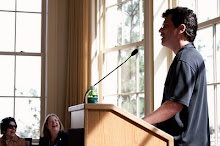The following are comments I made today in Janeites in response to a speculative thread about the "provenance" of Donwell Abbey and Hartfield in Emma:
"Thinking about this a little further, it's possible that there were manorial rights attached to Hartfield that prevented the Knightleys from doing exactly what they wanted to do in the district."
Spot on, as you Brits say! ;)
"I'm speculating that Hartfield was the remnants of an original manorial estate. In the medieval period it was common for lords of a manor to grant rights to a priory or Abbey, and it often then led to later conflicts of interest."
Derrick, you and anyone else who is interested in seeing what might have been motivating what I call the SHADOW story Knightley (as opposed to the Knightley in the overt story) in his actions as owner of Donwell Abbey ought to read the article by Helena Kelly in the latest edition of Persuasions Online:
http://www.jasna.org/persuasions/on-line/vol30no2/kelly.html
It's an amazing article, and a sign of the "new direction" in which JASNA has been slowly moving over the past 5 years or so, in providing more of an outlet, at least occasionally, for some pretty radical views about JA's writing. When Helena gave her talk at Chawton House, I did not attend, because enclosure was not on my radar screen at the time--to be honest, I had simply never previously taken the time to understand what enclosure was, assuming it was not worth the effort in terms of
understanding JA's allusions to her real world. How wrong I was! And so I missed what must have been a fantastic presentation, alas!
But I did subsequently, on my own, about 6 months ago, while looking at another great encloser of JA's, General Tilney, come to pretty much all the same conclusions as she (Helena Kelly) did about Knightley--and, what's more, I found a few OTHER smoking guns which are quite extraordinary, which make the same case even more strongly that she did.
And, Ellen, if you get a hold of Southam's 1971 article from the journal Ariel which I quoted from yesterday, you will see that Kelly's work owes a debt of gratitude to Southam's prescience in citing the necessity for understanding the larger-real-world significance of many of the seemingly "throwaway details" in JA's novels. Her article is a culmination of Southam's far-sighted vision four long decades ago.
"I'm thinking of one notorious case in 1330 when Adam de Banastre kidnapped and tortured the local Prior in a dispute over right of access by the Priory to collect tithes from the tithe barn on his land. Bad man! He was fined one mark and made to agree two roads across his property for the Priory to use."
Derrick, I am guessing that you are being charmingly discreet at this point in not mentioning the relevance of the above to the following comments by Mr. Knightley to his brother:
"But John, as to what I was telling you of my idea of moving the path to Langham, of turning it more to the right that it may not cut through the home meadows, I cannot conceive any difficulty. I should not attempt it, if it were to be the means of inconvenience to the Highbury people, but if you call to mind exactly the present line of the path -- The only way of proving it, however, will be to turn to our maps. I shall see you at the Abbey to-morrow morning I hope, and then we will look them over, and you shall give me your opinion."
"My point is that a division of the manor between the heiresses may still have left the Knightleys without the uncontested control that they sought. Why risk this, when another opportunity may not occur for generations?"
Perzackly. Well done, sir!
Cheers,
Arnie
Popular Posts
- Deirdre Le Faye & Me: "I am a scholar, she is a scholar: so far we are equal"
- Darcy's "We neither of us perform to strangers": a Radical New Interpretation
- The Hunger Games’s Veiled Allusion to Shakespeare’s Titus Andronicus
- Rick Santorum would have been the worst person in the world to Jane Austen too!
- August Wayne Booth in Once Upon A Time: Jane Austen Really IS Everywhere in 2012!
- 20 shades of hero/villain Mr. Darcy
- Can Jane Austen forgive Marianne?
- Miss Bennet, Elizabeth, Lizzy, Eliza: who calls her what....and why
- The Great Gadsby: an overnight lesbian feminist ‘comedy’ sensation 10+ years in the making (& 3 millenia overdue)
- Austenland: The Movie was Fun, but the Novel was Better [SPOILER ALERT as to both]
Friday, April 16, 2010
Subscribe to:
Post Comments (Atom)

No comments:
Post a Comment